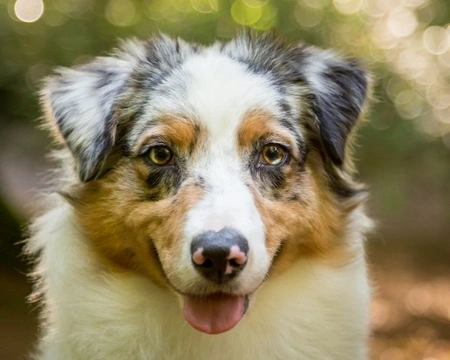
8 Things Dog Faeces Can Tell You
This article is not a substitute for veterinary intervention in the case of a sick animal. It is better safe than sorry when your dog’s health may be at risk, and if your dogs’ stools are abnormal in any way, it is recommended that you seek advice from your vet.
1. Passing more stools than usual
The most common reason for a dog passing excessive volumes of stools, or passing them more frequently than normal is over-feeding. It you feed commercial food by eye, it is wise to start following the manufacturers’ guidelines. Weigh your dog and weigh out the food. Make sure the main diet is reduced to allow for the calories that any treats or extras provide, or better still, cut them down to a minimal level. It may also be the case that a particular food is not optimal for an individual, and there could be ingredients that he is not digesting and assimilating as well as he should. Sometimes a gradual change to a diet with an alternative protein and carbohydrate source can be helpful.
2. Passing loose stools
There are a multitude of reasons why dogs may suffer from loose stools. Some of the more common may include over-feeding, a sudden change of diet, stress or over-excitement and a change to the water source (especially in puppies).
Infectious causes may include:
- Bacterial infection – e.g. campylobacter, salmonella
- Viral infection – e.g. parvovirus
- Small intestinal bacterial overgrowth
Parasitic causes may include:
- Worm infestation – e.g. roundworm, tapeworm
- Protozoal parasites – e.g. giardia, isospora
Clinical causes may include:
- Inflammatory bowel disease
- Exocrine pancreatic insufficiency
- Intoxication
- Pancreatitis
- Intestinal foreign body
- Neoplasia
- Intussuseption
- Protein losing enteropathy
This is by no means an extensive list, and the sheer volume of possible causes illustrates why it is so important to speak to your vet so that the root cause can be properly identified and treated.
3. Passing stools that are too hard (constipation)
Some potential causes of constipation may include:-
- Obstruction or partial obstruction by a foreign object (e.g. if a dog swallows stone, ingests a part of a toy, bone or indigestible chew)
- Obstruction or partial obstruction caused by a medical condition (e.g. tumours or polyps); sometimes the problem may be further down (e.g. rectal abscesses, anal tumours or an enlarged prostate)
- Endocrine (hormonal) problems such as hypothyroidism
- Internal parasite infestation ~ particularly whipworm which is common in SE England, and more prevalent in kennelled dogs
- Neurological conditions (e.g. spinal cord disease, nerve damage / trauma); a condition called megacolon can also be responsible and the smooth muscle that would normally contract to propel the faeces towards the rectum loses the ability to do so. This is suspected to be caused by a failure to transfer the electrical impulses from the nerves to the smooth muscle. Megacolon is primarily a feline problem, but it can affect dogs too.
- Certain drugs (e.g. diuretics, antacids, opioids and antihistamines)
Diet - some cats and dogs require more or less fibre than others, and for this reason certain diets may prove ideal for one but not for another. Too much fibre can result in both diarrhoea or constipation depending on the individual. Too little can also have the same effects. If your vet suggests your pet has a higher requirement that you add a commercial fibre supplement which is generally more effective and easier to dose than adding vegetables or bran.
Insufficient fluid intake - Constipation happens when too much moisture is absorbed from the food, and increasing fluid intake is known to be helpful in both people and pets who are constipated. You can increase your cat or dog’s fluid intake by soaking dry food for about ½ hr prior to serving and using canned food. A canine or feline water fountain can also be a useful investment and many pet owners have found them to be a very effective means of encouraging an animal to drink more. Adding a little oil (e.g. from some tinned sardines) given with each meal may help. You could also increase the frequency of meals to 3 per day so that the efficiency of the small intestine is optimised and there is less going on in the bowel.
4. Passing fresh blood in the stools
Small amounts of fresh red blood can be a typical symptom of colitis, and this happens when the lining of the colon has become inflamed. There are many causes of colitis which can range from eating something that has not agreed with the dog to infectious or medical conditions. Copious amounts of blood are of great concern and could indicate an obstruction in the lower part of the digestive tract.
5. Passing dark blood in the stools
Black, “tarry” looking stools are caused by old, dark blood which is known as malaena. It indicates bleeding from higher up within the digestive tract and represents a very serious problem which requires immediate veterinary intervention.
6. Passing yellow or pale stools
Yellow/grey or paler than usual stools may be indicative of pancreatic problems or giardia.
7. Passing stools that are greenish in colour
Greenish colour stools may indicate the presence of bile. Giardia and rodent poison can also cause green stools.
8. Passing mucous in the stools
A little mucous can occasionally be passed from time to time and be normal. It is a slimy substance which is produced by the intestines to keep the lining of the colon lubricated and moist. If the mucous is excessive or accompanied by any other changes to your dog’s faeces (e.g. with blood, or accompanying diarrhoea) then it is very important to seek veterinary advice. There can be all manner of causes (see No.2 and No.4).



